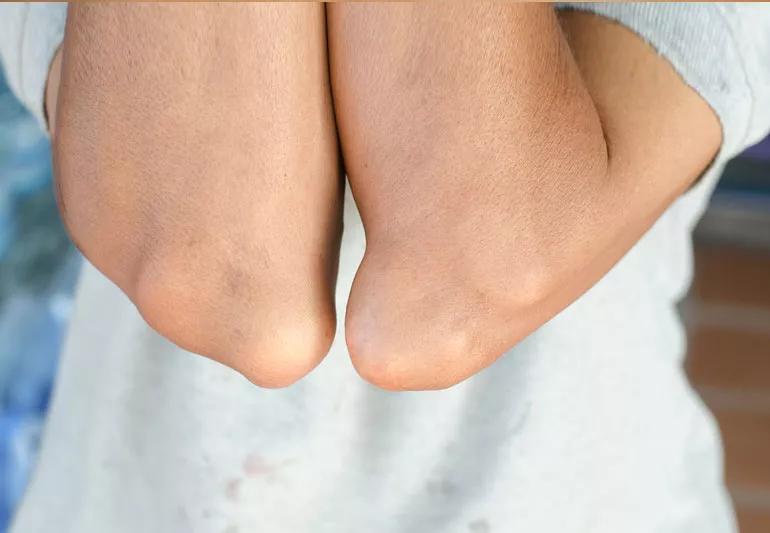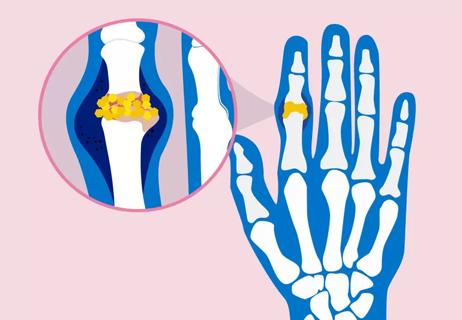Learn how this gout treatment can improve your quality of life

If you’re among the 9 million Americans who live with gout — a form of inflammatory arthritis — you’re all too familiar with the periodic attacks of pain and swelling in your big toes and other joints.
Advertisement
Cleveland Clinic is a non-profit academic medical center. Advertising on our site helps support our mission. We do not endorse non-Cleveland Clinic products or services. Policy
And you may know that these attacks happen when you have a high level of a substance called uric acid. Uric acid is a waste product of natural processes in your body, which is eliminated through your GI tract and kidneys. But if not enough uric acid is gotten rid of, it can accumulate in your blood. And once levels exceed 6.8 milligrams per deciliter (mg/dL), uric acid can leave your bloodstream and settle in joints, tendons and under your skin.
In your joints, uric acid can form needle-shaped crystals. From time to time, these can cause the swelling, redness and pain that you know as a “gout attack.”
Gout treatment takes a two-pronged approach:
Allopurinol is inexpensive and very effective. Yet, it isn’t used as often as it perhaps should be. “Too few people are started on the medication,” says rheumatologist Brian Mandell, MD, PhD. “And when people are started on therapy, many are not monitored for the lowering of the uric acid and treated to the effective target level.”
Advertisement
A recent study published in Arthritis & Rheumatology found that fewer than 38% of those with gout achieved the target uric acid level of less than 6 mg/dl. And another study found only 37% of people with gout took allopurinol — and only half of those with frequent flares regularly used this drug.
Even among people who do start on a drug, many stop taking it. “People with gout may not realize that this is a chronic disease, and we can cure it,” Dr. Mandell notes.
To effectively treat gout, you have to take urate-lowering therapy consistently. “If you are having frequent flares and you want to treat the disease, you need to dissolve those deposits,” Dr. Mandell says.
If you’ve already had an attack of gout, you are more likely to have others. Over time, gout attacks can become more frequent, last longer and involve multiple joints. Eventually, you can have joint damage.
Your doctor should take blood tests to check that your uric acid levels remain at the target. “People with gout should know their uric acid level,” Dr. Mandell says.
In the past, doctors advised their patients with gout to avoid foods high in purines, which the body metabolizes into uric acid. Steak, shellfish and seafood were all off-limits. However, research hasn’t shown any dramatic benefit of adopting that kind of restrictive diet.
“The idea that you’re going to stop eating red meat and your uric acid level is going to plummet to the point where the crystals dissolve is very unlikely,” Dr. Mandell explains. A heart-healthy diet is never a bad idea. But to ultimately stop future attacks, you need to stick with medication.
This article was adapted from Cleveland Clinic Arthritis Advisor.
Advertisement
Learn more about our editorial process.
Advertisement

The short answer from a rheumatologist

People with sickle cell trait have one copy of an abnormal gene — people with the disease have two

Raspberries are packed with nutrients that can reduce inflammation and prevent chronic diseases

Adding foods like fruits, vegetables, fatty fish and whole grains to your diet may help soothe inflammation

Both leukemia and lymphoma are blood cancers — but one is found in your bone marrow, while the other is found in your lymph nodes

Eating well can help reduce inflammation when you have endometriosis

These creams that you apply to your skin can actually help reduce localized pain, swelling and inflammation

Working with a therapist, staying active and practicing mindfulness are just a few ways to help manage stress

Start having sex about 72 hours before ovulation, then at least every other day during your fertile window

Attachment theory suggests that your earliest relationships shape connections throughout your life

It isn’t a recognized mental health disorder, but research shows that problematic social media use can negatively affect your mental health, self-esteem and sleep